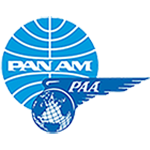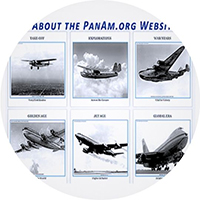ERA | WORLD WAR TWO
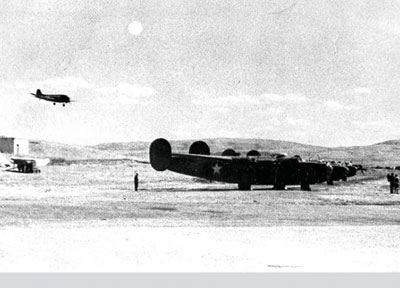
"The Day Wendell Willkie Chose To Fly Pan Am" by Tom Culbert: Willkie's tour around the world for FDR, and a story about an unusual WW2 mission.
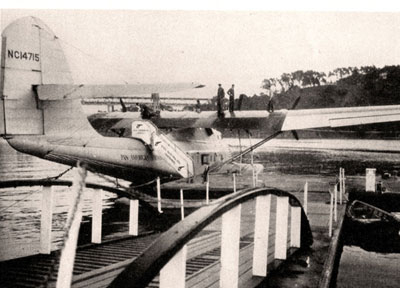
The M-130 China Clipper was the first out of the gate, but it was the Philippine Clipper that saw WW2 up close on Wake Island in 1941 for Pan Am.
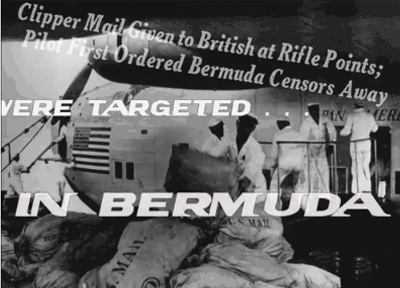
As WW2 began in Europe, PAA Pilot Charles Lorber landed his B-314 in Bermuda and British censors & marines removed all mail bound for Germany.
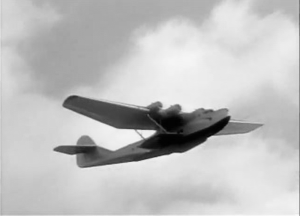
"When Passengers Were News." Pan Am's flying clipper ships were a lifeline in June 1941, prior to United States' involvement in World War Two.
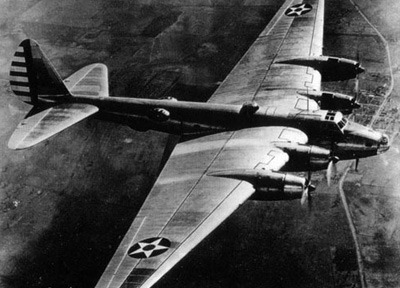
A Mighty Design: The story of the development and construction of Pan Am's famous Boeing B-314 flying boat, written by Doug Miller. Read the PDF
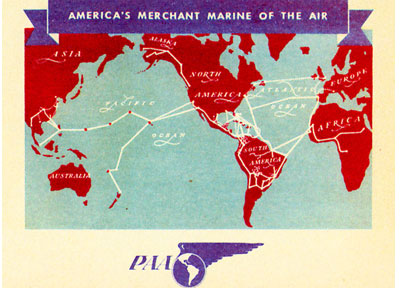
Pan Am's Air Ferry Service to Africa in World War 2: August 18 [1941] Pres. Roosevelt announced plans for the world’s most ambitious airways project.
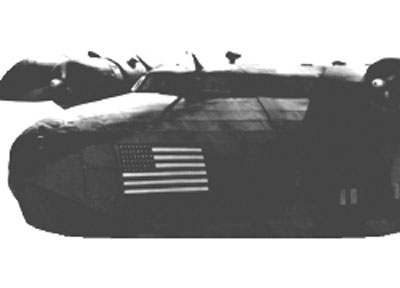
The day Geo. E. Warren III watched the last B-314 in 'Warpaint' and its final landing and take off in Miami with his dad, a PAA flying boat mechanic.
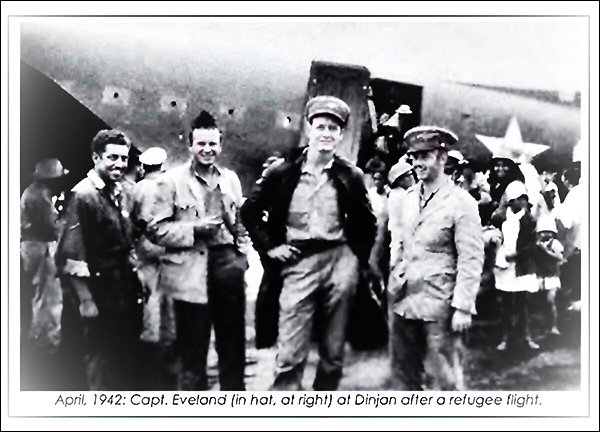
Pan Am Capt. I. Wayne Eveland flew the notorious Hump between India and China in World War Two & experienced the 1942 Evacuation of Burma. PDF.
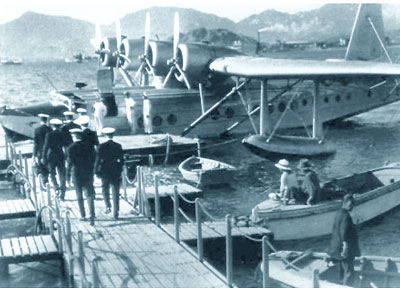
A "New Horizons" account of the Pan Am's Sikorsky S-42 Hong Kong Clipper II (aka Bermuda Clipper), destroyed at Hong Kong during WW2.
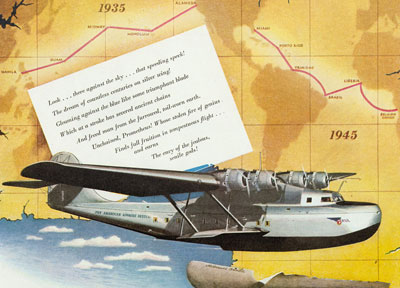
Loading the China Clipper: An Excerpt from Morten Beyer's book about Pan American World Airways' China Clipper cargo, "Flying Higher" (2010).
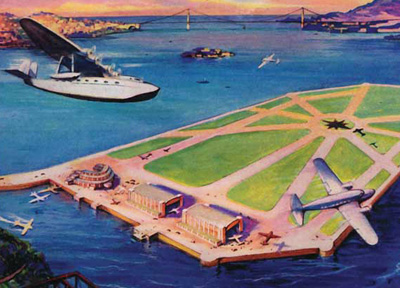
The building of Treasure Island Terminal and seaplane base in San Francisco Bay, and the Pan Am flying boats that took part in World War Two.
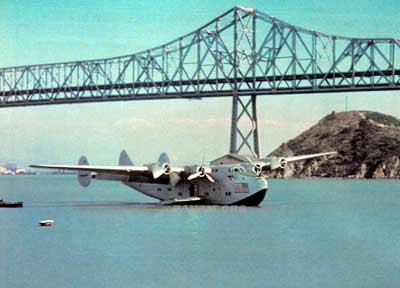
Service Aboard Clippers in Wartime: A few notes on Pan Am's flying boat operations during World War II, from Pan Am Transpacific Newsletter 1942.
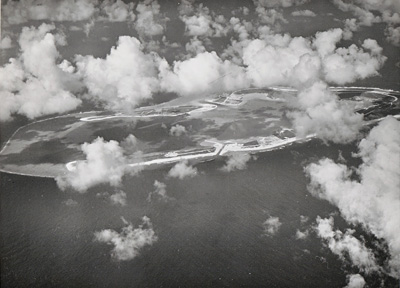
Echoes of Wake Island, by Bonnie Gilbert tells the story behind her 2012 book, "Building for War" and the civilian contractors and marines on Wake Is.
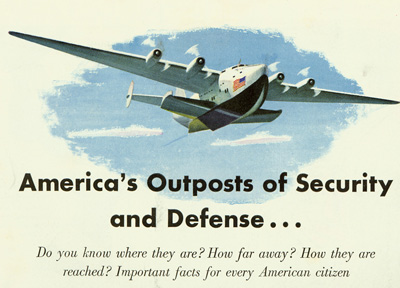
Pan American Airways in World War Two by Bob Gandt: A story that began December 7, 1941 with the bombing at Pearl Harbor. Read the PDF.

Engaging accounts by Ed Dover, former Pan Am Flight Radio Officer & author of "The Long Way Home," on his career with Pan Am during World War Two.
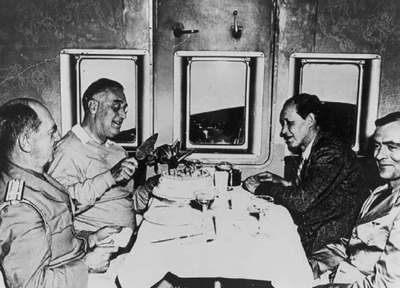
The Commodore and the President, from John C. Leslie's memoir: Arranging Pres. Roosevelt's daring WW2 flight to Casablanca on B-314 Dixie Clipper.
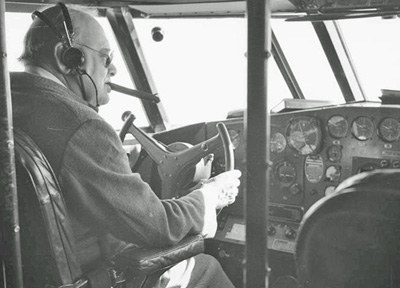
After the Pearl Harbor attack, Churchill sailed to Washington DC to meet with FDR, but flew home on the B-314 Clipper Berwick due to safety concerns.
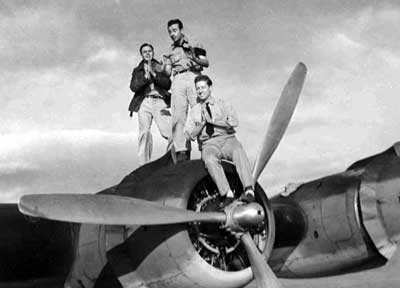
In 1945 after WW2 ended, Pan American released a new film, “Clippers At War” to publicize the contributions made by the men & women of Pan Am.
